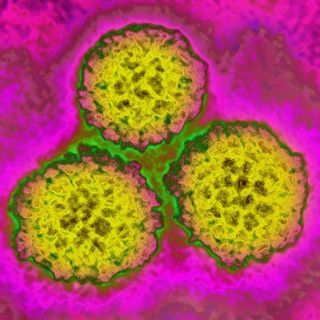
Everything You Need To Know About Skin Cancer
If detected early, it’s the most treatable of all cancers.

Although the exact incidence of skin cancer in India is not known, doctors say that it is much less common compared to, for instance, in the US, where one in five Americans have skin cancer.
“The fewer numbers can be attributed to the fact that Indian skin has a higher amount of melanin that acts as natural sun protection,” says Dr Rinky Kapoor, consultant dermatologist and skin laser specialist at Mumbai’s SL Raheja Hospital.
Still, national surveys and cross-country data in India indirectly indicate that skin cancer may be on the rise, and doctors say it is a disease people should know about — but unfortunately not many do.
What causes skin cancer
Dr Kapoor explains that overexposure to UVB — a kind of ultraviolet ray emitted by the sun — is the main cause of skin cancer. And the rise in the number of cases can be attributed to a thinner ozone gas layer in Earth’s atmosphere, a result of pollution, which allows more UVB radiation to come toward Earth, exposing the skin to these harmful rays. “This can cause cancer, especially in people with lighter skin,” she adds.
Dr Kapoor sometimes runs into mistaken beliefs, such as make-up causing skin cancer. It’s not true, she says. “Make-up does not cause cancer. Some products, though rare, are high in chemicals such as arsenic that aggravate lesions or moles that turn cancerous later,” she explains. But it’s probably best not to use products with those chemicals regardless; arsenic, for instance, is a poison.
Types of skin cancer
Skin cancers fall into two major categories: melanoma and non-melanoma skin cancers.
Melanoma is the most severe form of skin cancer, often occurring on the back in men and on the legs in women. Its risk increases with age, and the average age of detection is between 45 and 50 years. It usually appears on the skin as a dark, irregularly shaped area, flat or raised. If left untreated, melanoma can spread to other parts of the body.
Non-melanoma skin cancer is of two kinds: basal cell and squamous cell carcinoma. Basal cell carcinoma is rarely fatal and most commonly appears after the age of 40 in the form of lesions on the head or neck area, which may increase in size or bleed easily. Squamous cell carcinoma develops in people over 50 with sun-damaged skin. This is the most common form of non-melanoma cancer. These growths appear as red, scaly patches, that can be either flat or raised.
Related on The Swaddle:
Do You Really Need Sunscreen? Yes.
Many types of skin cancer grow slowly, while some melanomas can appear very quickly. The good news is that with early detection and treatment, non-melanoma cancers can be cured in more than 99 percent of cases, and melanoma is readily detectable and usually curable if treated early.
Who can get skin cancer
Dr Uma Dangi, a consultant in medical oncology at Mumbai’s Hiranandani Hospital, says skin cancer doesn’t affect only those who are overexposed to the sun. It can develop easily among patients who have a compromised immune system, such as organ transplant patients or HIV-positive individuals.
It also affects those who have long-standing burn scars and other severe scars, and those who have skin infections with certain types of human papillomavirus (HPV), adds Dr Kapoor.
People with fair skin, with more than a few moles or freckles, or with a family history of skin cancer are also at an increased risk for developing skin cancers.
Signs of skin cancer
Skin lesions that have persisted, and are not healing; moles that have been constant for a long time, but are suddenly increasing in size, changing in color, bleeding or having a discharge, are all potential signs of skin cancer. Upon noticing any of these, one should immediately consult a dermatologist.
Related on The Swaddle:
How Sunscreen Saves Your Skin
Preventing skin cancer
To start protecting your skin, limit sun exposure by seeking shade, especially between 10 am and 4 pm, advises Dr Saumya Shetty Hegde, a dermatologist at Mumbai’s Roots Skin Clinic.
She also adds that one should avoid getting sunburned, or even tanned. Covering up with clothing is also important, she says, as well as wearing broad-brimmed hats and UV-blocking sunglasses.
“Use a sunscreen with SPF 15 or higher for every day. For extended outdoor activity, use a water-resistant, broad spectrum sunscreen with an SPF 30 or higher, even in the winters,” she says. Apply one ounce — that is, two tablespoons — of sunscreen to your entire body 30 minutes before stepping out in the sun.
“It’s also important to keep newborns out of the sun; sunscreens should be used [only] on babies [older than] six months,” she adds.
Most importantly, says Dr Shetty, examine your skin, head to toe, every month. Use a mirror to examine unreachable parts of your body or ask a family member or friend to assist you. Check your moles regularly for any changes in appearance or sensitivity and consult a dermatologist upon noticing anything amiss. And finally, she advises, see a dermatologist at least once a year for a professional skin exam.
Anubhuti Matta is an associate editor with The Swaddle. When not at work, she's busy pursuing kathak, reading books on and by women in the Middle East or making dresses out of Indian prints.
Related


HPV May Contribute to Cardiovascular Disease as Well as Cervical Cancer
